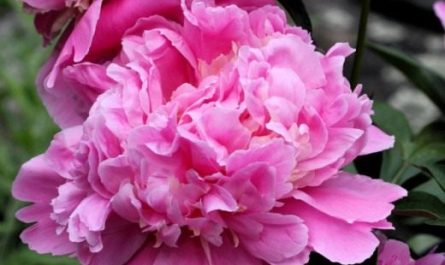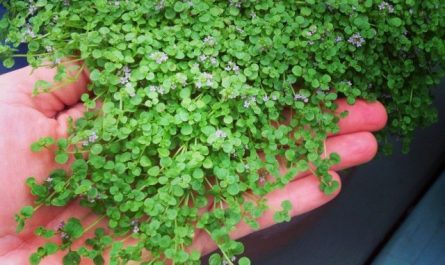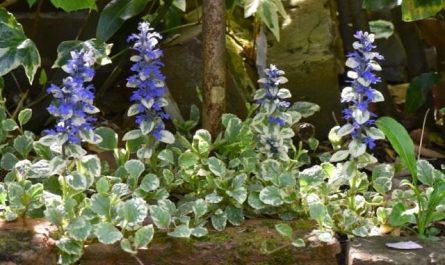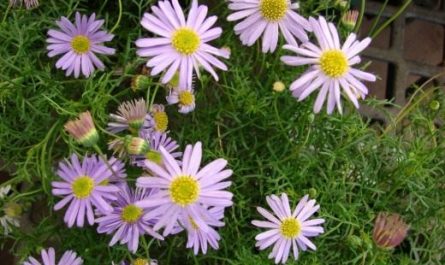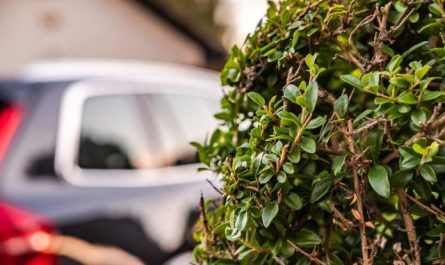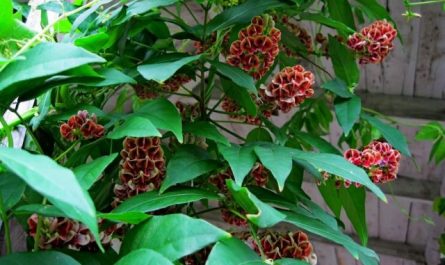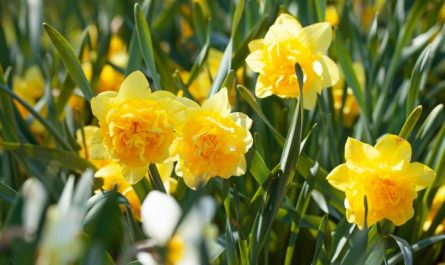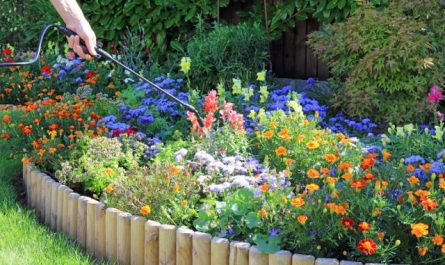Iris, or iris, is a perennial plant that is considered very popular among gardeners. In terms of flower beauty and elegance, iris can easily compete with many other plants. Irises are also valued for the fact that, after flowering, they retain their decorative qualities thanks to their beautiful foliage. Iris plants decorate the garden almost the entire season. Our article will tell you about the features of growing irises in the garden.

Botanical description of irises
Iris (Iris), or Iris is a genus of perennial rhizomatous plants of the Iris family, or Iris (Iridaceae). Homeland – Japan. Irises are found on all continents. The genus has about 800 species with a rich variety of shapes and shades. For this it received its name (Greek ἶρῐς – rainbow).
Iris stems are single or in bunches, simple or branched. Leaves are flat, sword-shaped, mostly collected at the base of the stem. The root system is located in the upper arable layer. Flowers are single or in inflorescences, in some species slightly fragrant.
Iris flowers are very distinctive: they have no sepals or petals. The shape of the flower is close to the structure of an orchid. The perianth is tubular, with a six-part bend. The bases of the petals grow together to form a tube, inside which is nectar.
In central Russia, irises bloom from late May to July. Irises are highly winter-hardy, unpretentious to soil, but do not tolerate very wet soil, so it is better to plant them on slopes. Flowers grow in one place for up to seven years.

Choosing a location and soil for irises
Irises are quite light-loving, and stop blooming when they get into the shade. Irises are planted in a sunny place. The plants are winter-hardy and drought-loving, and strong over-moistening of the soil is detrimental to them. Many tall and large-flowered irises are tied up, as they break in the wind. Light, neutral soils, not oversaturated with organic fertilizers and without fresh manure are suitable.
The soil for irises is prepared about a week before planting. The area is dug to the depth of a bayonet shovel, then 8-10 kg of humus is added. Of the mineral fertilizers, 3 tablespoons of simple superphosphate and 2 cups of wood ash are added. If the soil is acidic, 1 cup of dolomite flour is added. The fertilizer is raked to a depth of 10-12 cm and watered. The planting time is immediately after dividing the bush in the second half of July, after the irises have finished flowering.
Reproduction of irises
Sometimes it is stated that irises are propagated by roots. In this case, two completely different organs are confused: roots and rhizomes. Iris roots are not capable of regeneration, that is, restoring a whole plant from a part. Therefore, they are not suitable for propagation.
Some flower growers believe that irises can be propagated by leaves. This is also incorrect. An iris leaf separated from the rhizome, even in optimal conditions for root formation (in special greenhouses), does not form roots and gradually dies.
It is a different matter when a so-called “shovel” (an iris division) is planted in the ground, which is a shortened bunch of basal leaves with a part of the rhizome. Due to the presence of a piece of rhizome, such a spade, under suitable conditions, quickly takes root and turns into a new plant. This means that irises can be vegetatively propagated only by rhizome, which consists of separate thickened links – shortened underground annual shoots.
It is best to divide the iris every three years. You can also divide it in early spring. Using a sharp knife, divide a well-developed bush into several parts, each of which contains a well-developed rosette of leaves. Sprinkle the cut areas with dry charcoal. Shorten the roots and leaves by half.
Each part can be represented by one, two or three annual links. Old links are discarded.
The iris divisions are disinfected for 30 minutes in a solution of “Khoma” (80 g per 10 l of water), which kills pathogens. After this, the division is dried in the sun for 2-3 days. The cuts are sprinkled with crushed coal. The “spatulas” are planted shallowly, superficially, slightly inclined, so that the bud is at the soil level. The upper part of the rhizome should not be covered with soil.
If the rhizomes are too deep when planting, this may cause the plant not to bloom, or to become ill or die. Irises bloom profusely in the third year after planting.
After planting, the plants are watered. It is advisable to water the irises during the flowering period. This is done in the evening hours, protecting the flowers from water. Periodically, the soil is loosened and weeds are removed.
Irises that grow without replanting for 5-6 years stop blooming, as the soil becomes depleted and compacted, the overgrown rhizomes begin to crowd each other, intertwine, and interfere with the normal growth of neighboring ones.
Later, August-September cuttings of iris rhizomes yield a large percentage of plants that bloom in the first year after planting. With June-July cuttings, when the flower has not yet formed in the terminal buds, the percentage of flowering plants drops sharply.

Kidney propagation method
When propagating valuable varieties of irises, the “bud” method is used. In this case, the annual link is cut into 6-8 parts so that each has a bud. If a piece of rhizome weighing 0,5 g remains with the bud, then even such a bud, planted in a pot or picking box, under suitable conditions of temperature and humidity, will develop into an independent plant. With good care, it can bloom in the second year. The largest number of cuttings are obtained from lateral buds.
Plants that develop from terminal buds bloom in the first year of vegetation, which is undesirable, as it weakens them.
Hybrid iris can be propagated by parts of rhizomes with a bud at any time during the growing season, and if there are greenhouses and rhizomes prepared in the fall, at any time of the year.
However, for most varieties of hybrid iris, the best time for transplanting and dividing bushes is the second half of summer – early autumn. Late planting is dangerous on heavy, poorly structured soils, since in early spring, insufficiently rooted plants are squeezed out onto the surface when the soil freezes and thaws.
It should be remembered that the method of bud propagation is justified in cases when it is necessary to obtain more plants from a small number of mother bushes in the shortest possible time. In all other cases, it is better to propagate iris by dividing the bush.
In production conditions, pieces of iris rhizomes with a bud are planted at a depth of 3-5 cm in the furrows of the beds. The foliage and roots of the transplanted plants are shortened by at least a third of their length.
The optimal depth of planting iris rhizomes should be equal to 1,5-2 of their diameter. Leave 25-30 cm between plants in a row and 45-50 cm between rows. With this planting, the plants in a row quickly close up, forming continuous lines separated from each other by inter-rows. This makes it easier to care for the soil, apply fertilizers and reduces the shading of plants. After planting, the plants are watered abundantly, for which a small depression is made around them. When the water is absorbed into the soil and its surface dries slightly, the hole is loosened and mulched so that the bed looks neater, the leaves of the plants are turned in one direction during planting. In this case, the plane is directed across the beds.
When dividing the bushes and transplanting them to a new location, hybrid iris varieties gain strength in the first year, bloom profusely in the second and third, and then, as they become denser, gradually lose their decorative qualities.

Caring for irises
Plants are fed with mineral fertilizers 2-3 times per season. The first feeding is done at the beginning of growth: 10 tablespoon of urea and potassium sulfate are diluted in 1 liters of water, using 5 liters of solution per 1 m2.
The second feeding of irises is carried out at the beginning of budding: 10 tablespoon of “Agri-Cola for flowering plants” and potassium sulfate are diluted in 1 liters of water. Before feeding, irises are sprinkled with up to 1 glass of wood ash.
The third feeding of irises is carried out 10-15 days after flowering: 10 tablespoon of nitrophoska, “Agricola-1”, organic fertilizer “Effekton-DC” is diluted in 7 liters of water. Use up to 5 liters of solution per 1 m2.
With the onset of the first frosts, the foliage of the irises is cut in half, as when planting. When yellow leaves appear, they are cut off. After flowering, the flower stalk is broken off at the base. Before winter, with the onset of the first frosts, the plantings are covered with peat with a layer of 10 cm, in the spring it is necessarily raked away.
Diseases and pests of irises
Iridescent and winter moths
These are dangerous pests of bearded and especially Siberian irises. At the beginning of the growing season, the caterpillars of the cutworm (Hydraecia micacea) eat away the bases of the flower stalks, which turn yellow and die. They are not able to “cut off” the powerful flower stalks of tall bearded irises, but the damage they cause is sufficient for the flower stalks to be knocked down by the wind.
In addition, caterpillars can damage rhizomes (of the cutworm (Helotropha leucostigma) and winter cutworm (Agrotis segetum)), which are then easily affected by bacterial rot. In dry summers, iris plantings are more affected by cutworms.
Control measures: At the beginning of the growing season, spray twice (with an interval of 7 days) with a 10% solution of malathion.
Gladiolus thrips
This insect, barely visible to the naked eye, causes significant damage. The length of its tiny body is 1-1,5 mm. Thrips settle in tightly compressed leaf sheaths of irises. The affected leaf turns brown, dries up, and becomes covered with brown crusts. In such leaves, photosynthesis is disrupted, which has a detrimental effect on the development of the entire plant, the formation of peduncles and flowers.
During the growing season, the insect moves to iris flowers, causing their deformity and discoloration. The buds do not open well, and if severely damaged, the inflorescence does not form at all. Hot and dry summers are favorable for the development of the parasite. Up to 9 generations of the pest develop during the season in the southern regions of the country.
Control measures: Affected plants are sprayed twice with a 10% solution of malathion with an interval of 7 days. You can use tobacco infusion for spraying: 400 g of makhorka infuse for two days in 10 l of water, strain, add 40 g of laundry or green soap.

Medvedka
The mole cricket in the south of Russia poses a serious threat to irises. An adult insect reaches 3,5-5 cm in length. It has wings, strong, mobile horny jaws, strong front pincers equipped with a toothed file, with which the mole cricket cuts the soil, and along with it rhizomes, roots, and bulbs. The pest easily travels underground, quickly swims in water, and even flies through the air. Crawling to the surface of the soil, it moves quite quickly. The insect’s “uniform” is durable and waterproof. The pest is endowed with a very keen sense of smell.
Control measures:
- Collect more eggshells during the winter and grind them into powder. In the spring, when planting, moisten the powder with vegetable oil for scent and put one teaspoon into the holes. The mole cricket, having tasted the bait, dies.
- Fill the pest’s earthen passages with a soap solution (4 tablespoons of washing powder per bucket of water). The mole cricket either dies underground or crawls out to the surface, where it can be easily collected and destroyed.
- If you plant marigolds along the borders of your plot, this will prevent the mole cricket from entering your garden from the neighboring area.
- You can get rid of the mole cricket using an infusion of chicken manure, watering the ground with it in dry weather.
Slugs
Slugs primarily damage the more delicate central leaves of the leaf bundle. When there is a mass accumulation of pests, they damage other leaves as well. Of all the types of irises, bearded ones are preferred. Slugs can contribute to the spread of bacteriosis. Slugs eagerly eat leaf bundles affected by bacteriosis that have fallen to the ground. Then, crawling onto healthy plants, slugs spread the pathogen of this disease.
Control measures: Burdock leaves or wet rags are placed between the plants to provide cover. The pests are then collected and destroyed. You can use tobacco (makhorka) dust (4 g/m2), superphosphate (35 g/m2). Granulated metaldehyde is a very good means of combating slugs. Granules are scattered in dry, warm weather in the evening or early in the morning between the plants (30-40 g per 10 m2).
May beetle
May beetle larvae gnaw at the roots and rhizomes of irises. The larvae grow in the soil for several years. They can be found in large quantities in organic remains and manure. Before adding manure to the soil, it must be sifted through a sieve, removing the larvae and then destroying them.
Wireworm (click beetle)
The beetle larvae damage the rhizomes of irises, eating holes and passages in them, in which bacteria and fungi settle, and the plant may die over time. The click beetle has a small, elongated black body; striped specimens are also found. The larvae are narrow, long, consisting of segments, with a very dense shell of yellow or brown color. In winter, they penetrate deep into the soil, and in the spring, when the soil warms up, they rise up. Deep digging of the soil helps to destroy the larvae and the beetles themselves.
To combat insect pests, you can also use infusions of insecticidal plants:
- Red hot peppers (100 g of cut fresh pods or 50 g of dried ones) are poured with 1 liter of water and boiled for 1 hour, then left for two days, after which the decoction is filtered and the plants are sprayed at the rate of 100 g of infusion per 10 liters of water with the addition of 40 g of green soap.
- You can also use pyrethrum – dust the plants with the powder or infuse 100-200 g of the powder in 10 liters of water for 10 hours and spray with this solution.
When using insecticidal plants, just as when working with pesticides, you must follow the rules of personal hygiene: protect your mouth and nose with a respirator, and wash your hands thoroughly after handling.

Bacteriosis, or soft rot of rhizomes
The most dangerous disease of irises is bacteriosis, or soft rot of the rhizomes. The causative agent of the disease is the bacterium Erwinia aroidea, or Pseudomonas iridis. Diseased plants lag in growth during the growing season. Their leaves turn brown and dry up, starting from the tips. The affected fan of leaves bends, the leaves are easily pulled out of it, and eventually it falls to the ground. The affected bases of the stems emit an unpleasant odor. The rot spreads to the inner part of the rhizome, which is completely destroyed, turning into a white mushy foul-smelling mass. The plant dies. The rhizome shell remains intact.
Control measures: In the fight against bacterial rot, diseased plants are discarded. When replanting, the affected areas of the rhizomes are cut out with a sharp knife to healthy tissue and sprinkled with crushed coal. Before planting, the rhizomes are treated in a 0,5% solution of potassium permanganate for 30 minutes or in suspensions of captap (0,2-0,5%) for an hour. The rhizomes should be protected from freezing and mechanical damage. It is important to destroy insects that carry the disease. It is important to observe crop rotation with the return of irises to their original location after 4-5 years.
We look forward to your advice on growing this wonderful flower, as well as on how to combat iris pests!
